Kontakt
Unser Kundenservice ist gerne für Sie da.
Sie haben Fragen zu unseren Produkten. Schreiben Sie uns. Unser Team wird sich in Kürze mit Ihnen in Verbindung setzen.
Öffnungszeiten:
MO-DO: 8:00 – 17:00 Uhr
FR: 8:00 – 14:00 Uhr
Unser Kundenservice ist gerne für Sie da.
Sie haben Fragen zu unseren Produkten. Schreiben Sie uns. Unser Team wird sich in Kürze mit Ihnen in Verbindung setzen.
Öffnungszeiten:
MO-DO: 8:00 – 17:00 Uhr
FR: 8:00 – 14:00 Uhr
Hirsutismus ist eine abnorme Erscheinung androgener Hormone, entweder aufgrund einer übermäßigen Produktion (Hyperandrogenismus) oder abnormaler Empfindlichkeit der Haut (sogenannter “idiopathischer Hirsutismus”). Es gibt auch pathologischen Hypertrichose. Dies ist in der Regel genetisch, manchmal mit einer Hormonkomponente, und kann bei Männern und Frauen auftreten. Bei Frauen impliziert Hirsutismus das Vorhandensein von Haaren auf bestimmten Bereichen des Körpers, wo es in der Regel nur bei Männern wächst. Diese Bereiche umfassen: Oberlippe, Kinn, Wangen und Brust. Behandlungen sind kosmetisch (Verfärbung der Haare und Haarentfernung durch verschiedene Mittel, einschließlich Wachsen), elektrisch (Elektrolyse), Laser oder gepulstes Licht und manchmal durch Medikamente (kombinierte orale Anti-Androgen-Therapie).
Haarentfernungsbehandlung ist jedoch wichtig, wenn komplette Ergebnisse erhalten werden sollen.
Wissenschaftliche Literatur über Hirsutismus erwähnt immer wieder die Notwendigkeit zur Haarentfernung, durch egal welches Mittel, als eine notwendige Behandlung für diese Bedingung.
Das Ziel der Auswertung war es, die Wirksamkeit und Sicherheit der Behandlung zu bewerten. Um dies zu tun, stützte sich diese Studie auf verschiedene Daten: klinische Studien, eine Umfrage, einen Studienbericht und Literaturrecherchen.
Tests wurden mit dem E-One auf 63 Personen in Sabouraud Gesundheitszentrum (Paris Hôpital Saint Louis) und dem Labor ATS / Eurofins (Marseille) zwischen 2008 und 2011 durchgeführt.
Zusammenfassung der Kommentare
Diese 3-Jahres-Studie zeigt die Nachhaltigkeit der langfristigen Behandlung mit E-One sowie die Sicherheit.
Heißwachs: Effizienz wurde in Bezug auf die herkömmliche Referenzmethode demonstriert.
Die Toleranz wurde ebenfalls überprüft. Das Auftreten von Erythema variiert wenig von Jahr zu Jahr: 5,2% (1. Jahr), 3,7% (2. Jahr) und 3,4% im letzten Jahr; nach wie vor schwach.
Keine Nebenwirkungen wurden während der Studie berichtet.
Dieser Test war auch Gegenstand einer Veröffentlichung im Juni 2010 im Journal of Cosmetic Dermatology: “Randomisierte Studie der Toleranz und Wirksamkeit von Intense Pulsed Light (IPL) Quelle im Vergleich zur Heißwachs-Methode” von Hertsel Adhoute, et al. (Periodical WILEY, Inc.) erreichbar über diesen Link: http://www.scimagojr.com/journalsearch.php?q=4000151101&tip=sid
Einige Benutzer wählten E-One zur Behandlung von Hirsutismus, in Kombination mit oder ohne Arzneimittelbehandlung.
Methodik und Ablauf
Wegen der Schwierigkeiten bei der Beschaffung von Anwender-Kommentaren, verschickte E-Swin einen “anonymen Fragebogen zur Zufriedenheit bei Hirsutismus”, um alle Kunden im Jahr 2009 und diejenigen mit Hirsutismus zu erreichen.
Kunden, die antworteten
589 Menschen, die unter Hirsutismus litten und E-One verwendeten haben den Fragebogen beantwortet.
Kunden in ärztlicher Behandlung
78% leiden unter hormonellem Hirsutismus
Resultate
Leistung
Der Grad der Zufriedenheit (“zufrieden” und “sehr zufrieden”) erreicht 66% mit E-One, im Vergleich zu einer Rate von 44% für diejenigen von Sitzungen mit einer professionellen Fachkraft. Eine ähnliche Rate der Zufriedenheit (63,3%) (“gleich zufrieden mit E-One” und “zufriedener mit E-One”) wurde für 7% der Kunden festgestellt, die eine Behandlung erhielten, im Vergleich zu Sitzungen von Fachkräften. Kein Anspruch der nicht-Erfüllung mit E-One wurde festgestellt.
Sicherheit
Sicherheit
Keine Probleme hinsichtlich der Sicherheit der Vorrichtung wurden während der Studie beobachtet.
Zusammenfassung der wichtigsten Ergebnisse
“Eine Studie über die Auswirkungen der Blitzbelichtung durch eine Quelle von gepulstem Licht (emittiert vom Gerät: E-One Clinic von E-Swin) zur Haarentfernung auf Tumorbildung in einem Melanom-Fall” für den Zeitraum vom 23. November 2012 bis zum 7. Dezember 2012, durchgeführt von CNRS.
Ziel des Artikels
Den Mangel an Auswirkungen von gepulstem Licht vom E-One Clinic Gerät bei einem Melanom bei Mäusen bei Tumorbildung überprüfen.
Die beiden Chargen wurden überwacht, um den Unterschied in der Entwicklung von Tumoren zwischen denen, die geblitzt wurden und denjenigen, die nicht geblitzt wurden, zu beurteilen.
Resultate
Blitzen mit E-One auf Melanomtumoren verändert nicht das Wachstum der Tumore.
Aus offensichtlichen ethischen Gründen wurden die Tests nicht auf Menschen, sondern an Mäusen durchgeführt.
Die wichtigsten Ergebnisse
Das Tumorwachstum in Kontrollmäusen und Mäusen, die mit E-One behandelt wurden, zeigt keinen signifikanten Unterschied. Wenn eine Blitzdosis abgegeben wurde, demonstriert die Studie einen Mangel an inhibitorischen oder beschleunigenden Effekten auf die Tumorproliferation; keine Anzeichen von Intoleranz wurde an gesunden peri-Tumor-Haut beobachtet, die dem Blitz ausgesetzt war.
Die ebenfalls erhobenen Daten zeigen die psychologischen Folgen der erfolgreichen Behandlung von gepulstem Licht auf Hirsutismus (Verbesserung der Selbstachtung ist höher als bei Behandlung durch Elektrolyse).
In Bezug auf E-One war dies das erste Mal, dass ein Gerät mit Pulslicht-Technologie mit einer beliebten Haus-Haarentfernungs-Methode verglichen wurde, die eine nachhaltige Wirkung hat: Wachsen. Phase I der Studie bestätigt die vorhergehenden in Bezug auf die Verwendung des Geräts, basierend auf IPL. Diese besondere Studie zeigt eine bessere Toleranz gegenüber E-One als Wachsen. In allen Fällen ist die Rötung, die blieb sehr hell und hat nicht zu Ödemen oder Schuppung geführt. Diese Angabe wurde während Phase II bestätigt, im Hinblick auf das Auftreten von Erythemen oder einer anderen Nebenwirkung.
Somit bestätigt die zweite Phase und dritte Phase, in der nur das E-One verwendet wurde, die 2 Vorteile des Geräts.
Diese Ergebnisse bestätigen die Abwesenheit von reizenden und anhaltenden Effekten; eine leichte Rötung dauerte 24 Stunden (Phase I der Studie) in 3% der Fälle. Kein Erythem wurde nach 24 Stunden beobachtet. Diese Effekte sind ebenfalls ähnlich wie bei Studien über die Verwendung von IPL: leichte und reversible Erythema.
Gepulstes Licht leistet damit eine perfekte Haarentfernung zur Behandlung von Hirsutismus, umso mehr, da verschreibungspflichtige Medikamente:
Haarentfernung bleibt daher eine Notwendigkeit.
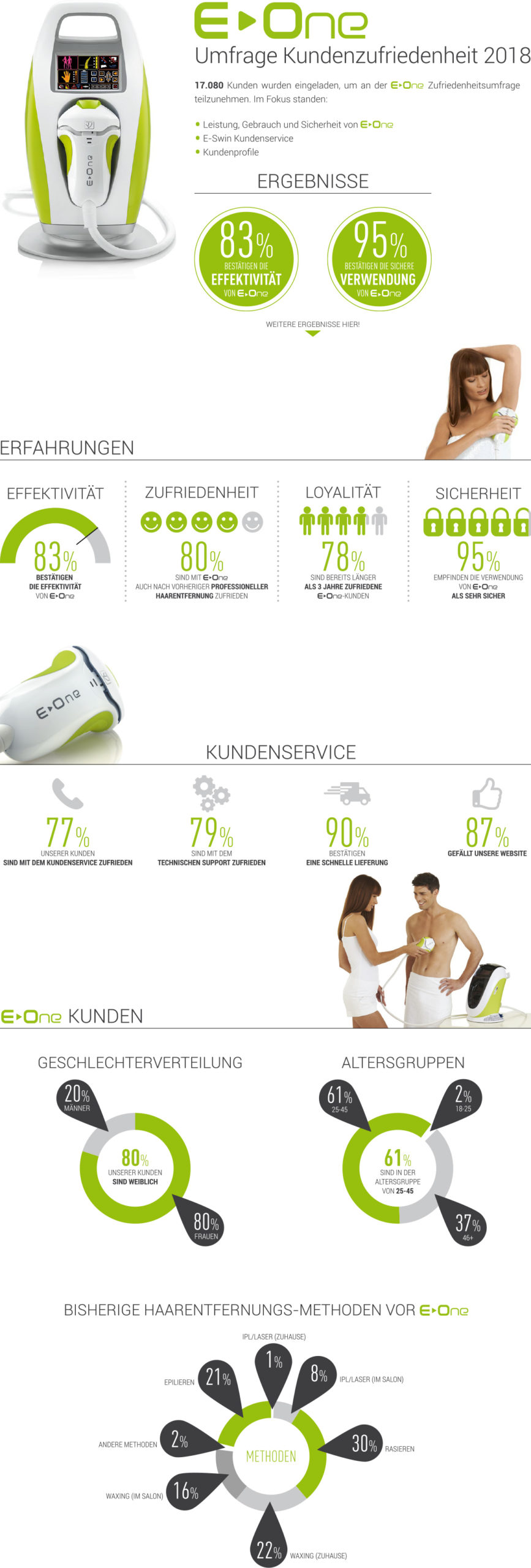
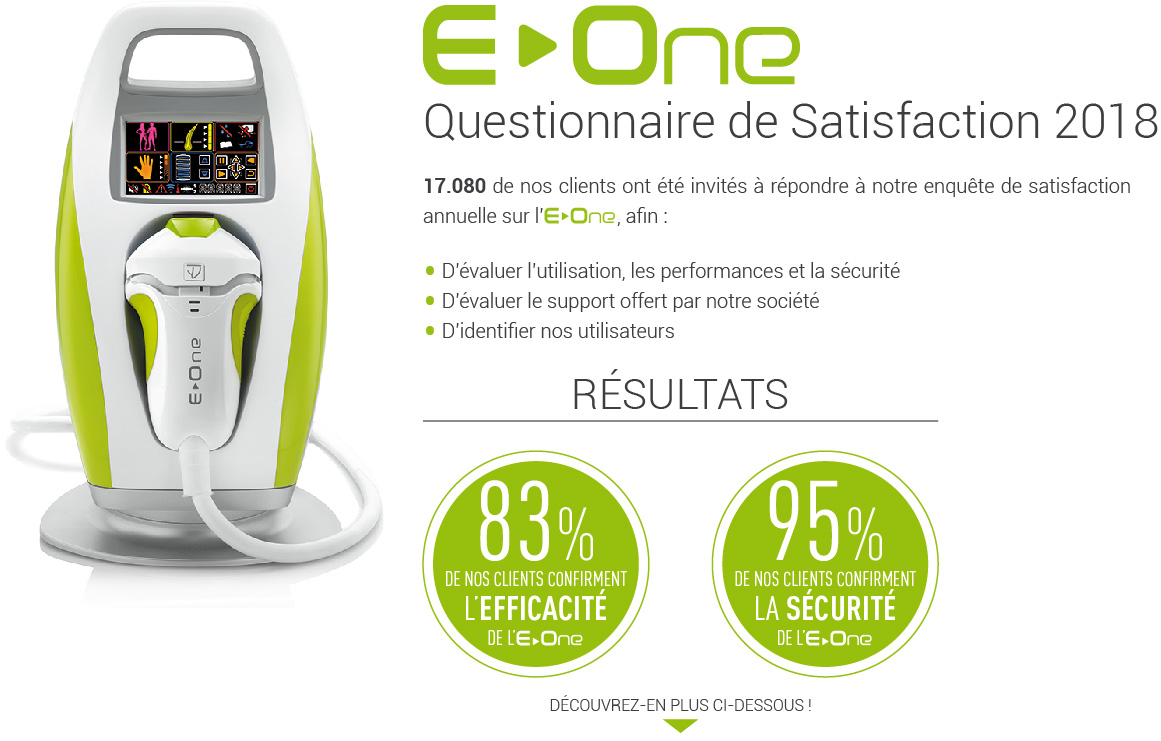


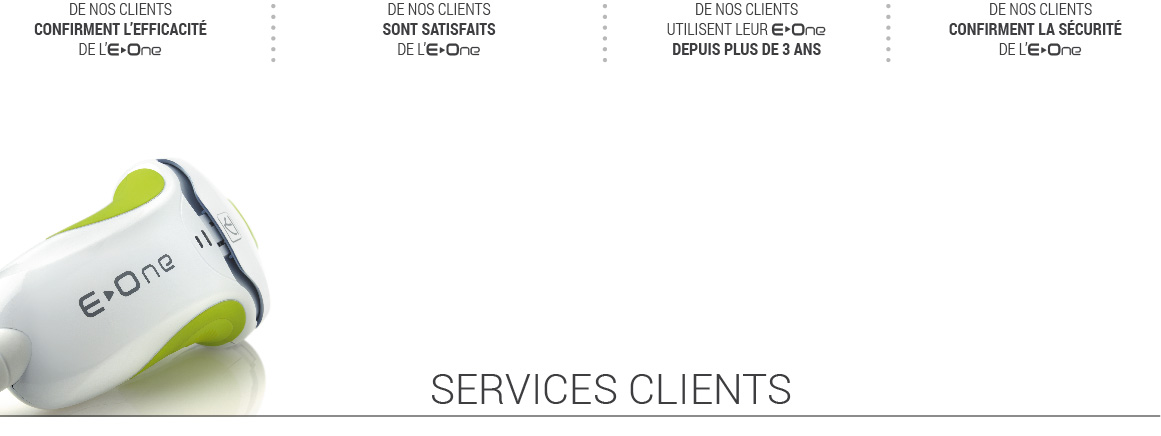

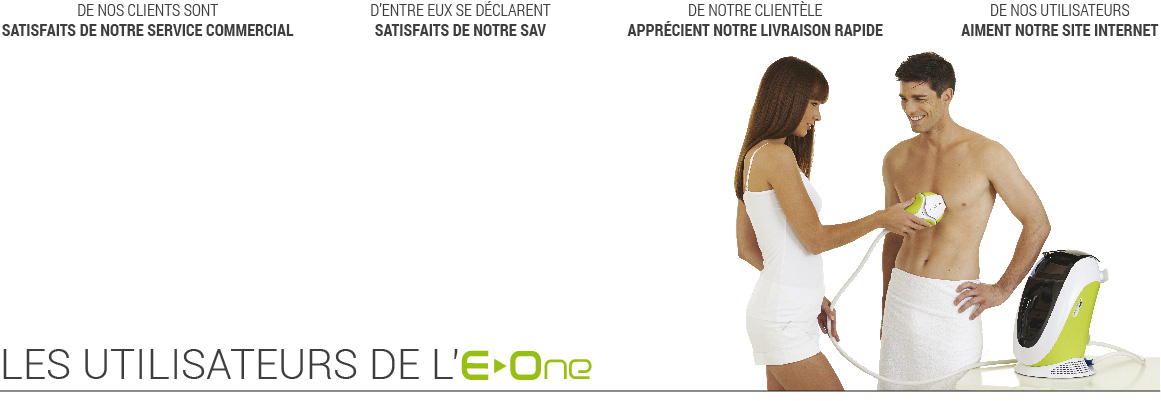
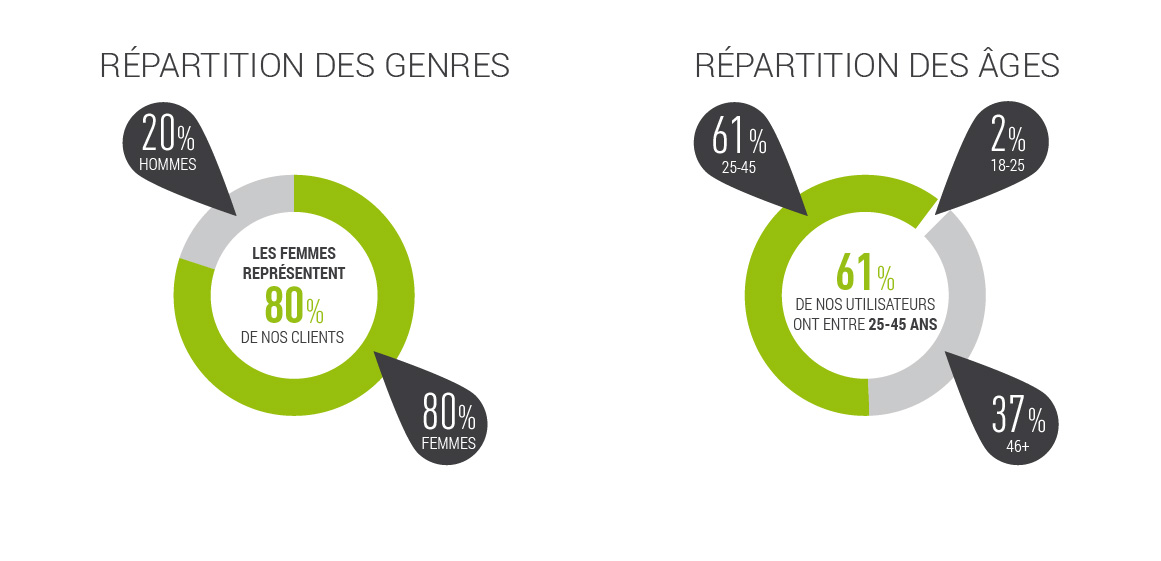
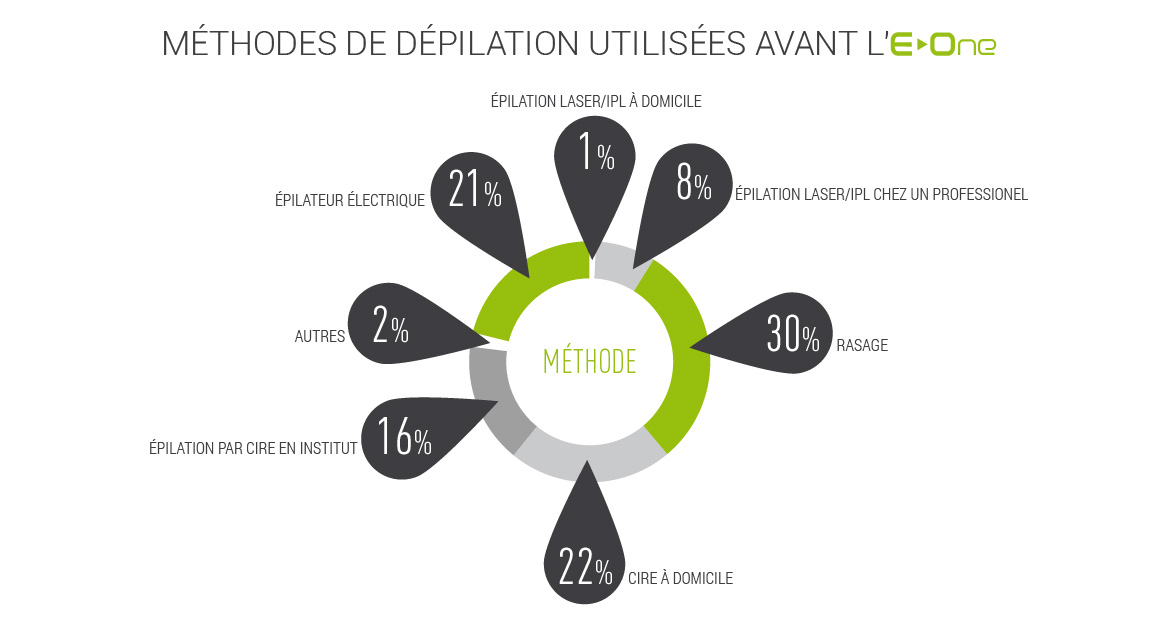
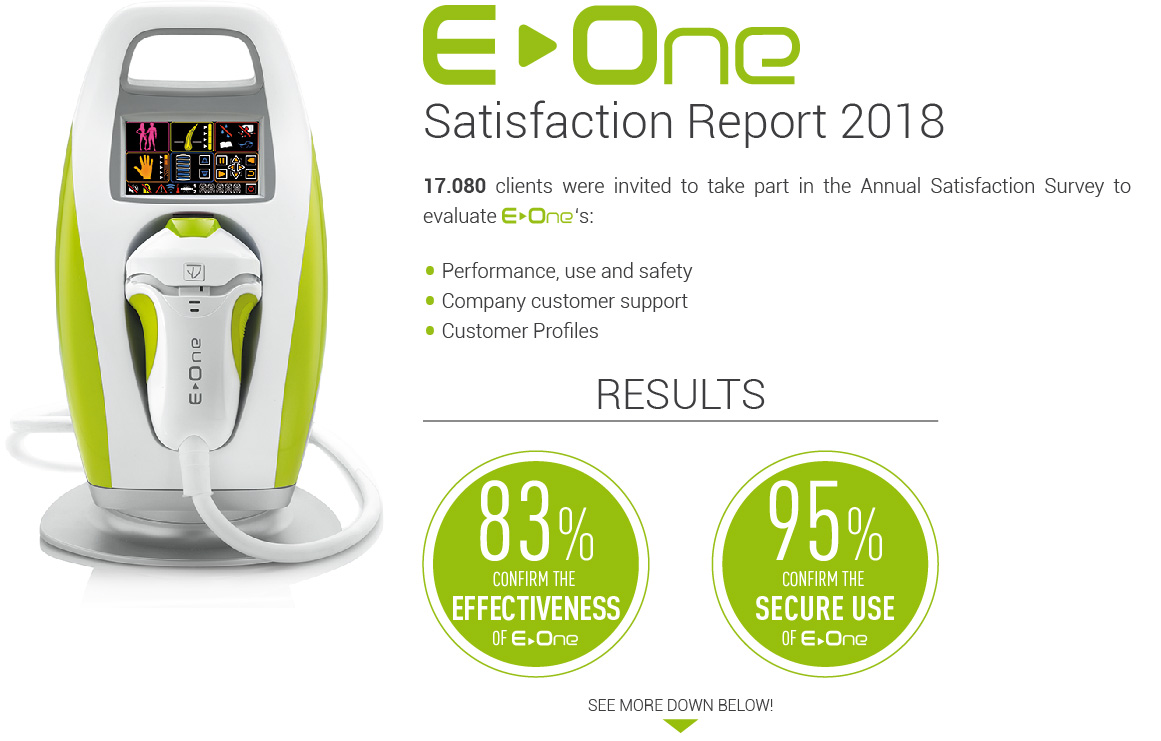


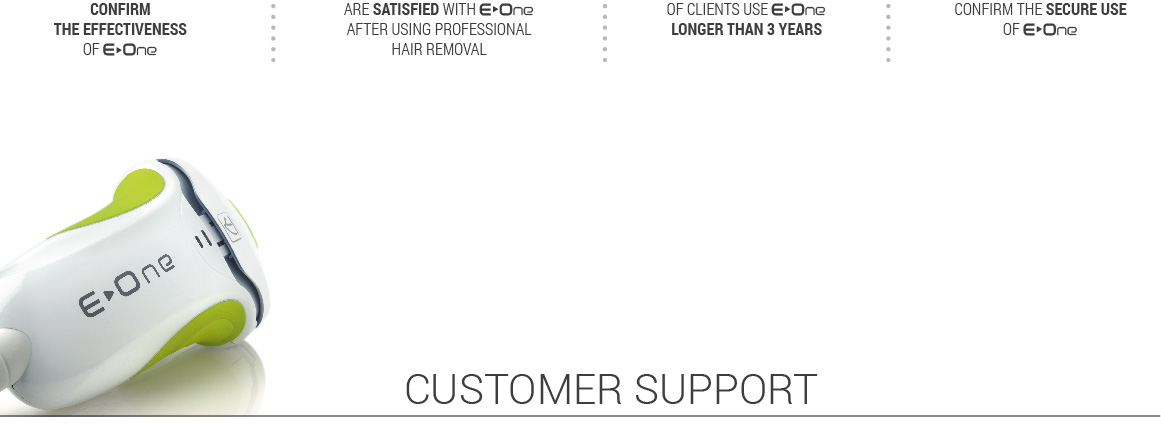

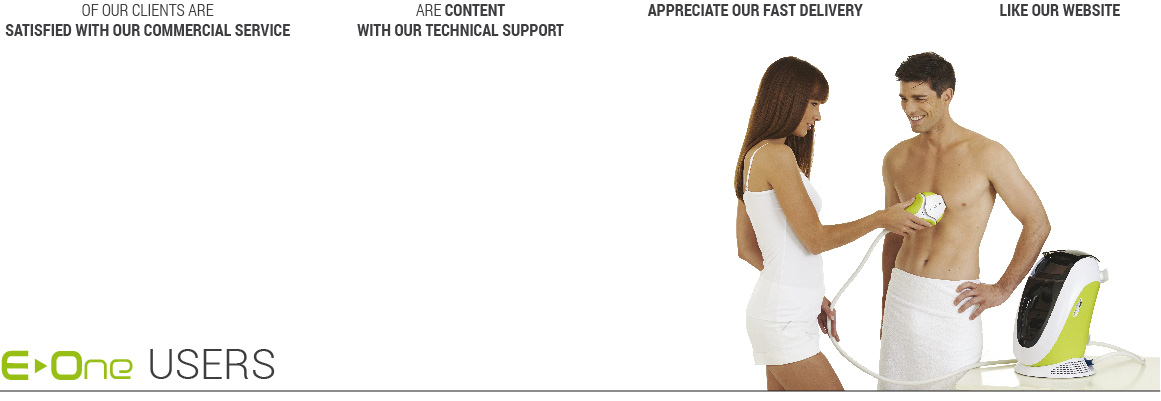
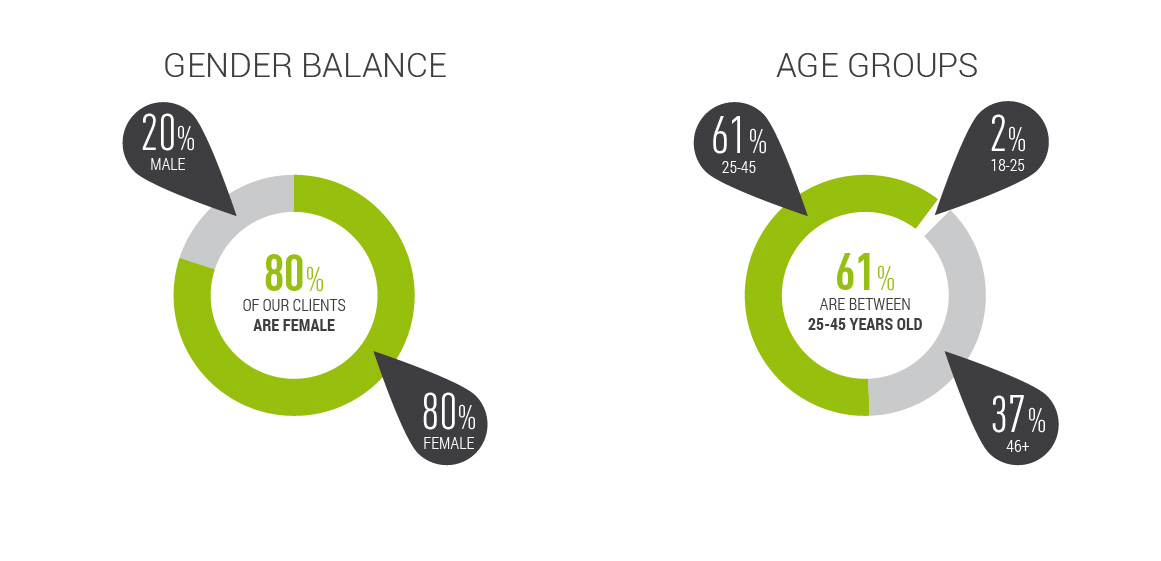
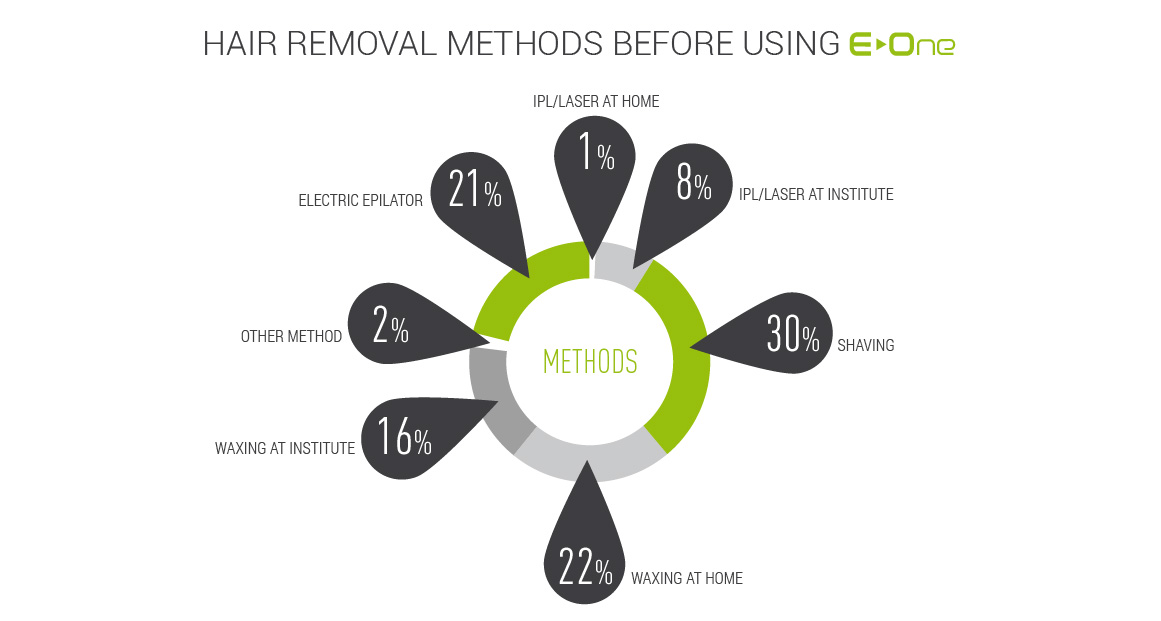
L’hirsutisme constitue une manifestation anormale des hormones androgéniques soit en raison de leur production excessive (hyper androgénie) ou d’une sensibilité cutanée anormale (hirsutisme dit « idiopathique »). On peut y rapprocher l’hypertrichose pathologique qui est plus souvent d’origine génétique, avec parfois une composante hormonale et qui peut se rencontrer chez l’homme et chez la femme. Chez la femme, l’hirsutisme implique la présence de poils en particulier dans des régions du corps où normalement seul l’homme en possède. Ces zones sont notamment : la lèvre supérieure, le menton, les joues, le thorax. Les traitements sont d’ordre cosmétiques (décoloration des poils et épilation par tous les moyens et notamment : cire, électrique (électrolyse), Laser ou lumière pulsée) et parfois médicamenteux (pilule œstroprogestative, traitement anti androgène). Le traitement de d’épilation s’avère toutefois indispensable pour des résultats complets.
La littérature scientifique relative à l’hirsutisme mentionne systématiquement la nécessité de l’épilation, quel qu’en soit le moyen, en tant que traitement indispensable de cette pathologie.
L’objectif de l’évaluation a été de vérifier l’efficacité et l’innocuité du traitement. Pour ce faire, cette étude ’est basé sur différentes données : des tests cliniques, une enquête de satisfaction, un rapport d’étude et des recherches bibliographiques.
Des tests ont été réalisés avec l’E-One sur 63 personnes au Centre de santé Sabouraud (Hôpital Saint Louis – Paris) et au Laboratoire ATS/Eurofins (Marseille) entre 2008 à 2011.
Commentaires rapides
Cette étude menée sur 3 ans permet de démontrer la durabilité du traitement à long terme de l’E-One (3 ans), ainsi que son innocuité.
L’efficacité a été démontrée par rapport à la méthode classiquement de référence : la cire chaude.
La tolérance a été vérifiée également. L’apparition d’érythèmes varie peu d’une année à l’autre : 5.2% (1ère année), 3.7 % (2ème année), puis 3.4 % la dernière année, et reste faible.
Aucun événement indésirable n’a été signalé durant l’étude.
Ce test a par ailleurs fait l’objet d’une publication, en juin 2010, dans le Journal of Cosmetic Dermatology, « Randomized study of tolerance and efficacy of a home-use intense pulsed light (IPL) source compared to the hot-wax method », Hertsel Adhoute, et al. (WILEY Periodical, Inc), accessible via ce lien : http://www.scimagojr.com/journalsearch.php?q=4000151101&tip=sid
Des utilisateurs ont choisi l’E-One pour le traitement de l’hirsutisme, en association ou non avec un traitement médicamenteux.
Méthodologie et déroulement
En raison de la difficulté à obtenir des témoignages des utilisateurs, E-Swin a donc envoyé en 2009 un “Questionnaire satisfaction anonyme hirsutisme” à l’ensemble de ses clients en invitant ceux souffrant d’hirsutisme à y répondre.
Clients ayant répondu
589 souffrant d’hirsutisme et utilisant l’E-One ont répondu à ce questionnaire.
Clients sous traitement médical
78% souffrant d’hirsutisme hormonal.
Résultats
Performance
Le taux de satisfaction (« satisfaite » et « très satisfaite ») a atteint 66 % avec l’E-One, par rapport à un taux de 44% pour celles ayant réalisé les séances chez un professionnel. Un taux de satisfaction comparable (63.3%) (« aussi satisfaite avec l’E-One » et « davantage satisfaite avec l’E-One ») a été atteint, concernant les 7% de clientes sous traitement, par rapport aux séances effectuées chez les professionnels. Aucune réclamation fondée sur le fait de non-résultats avec l’E-One n’a été constatée.
Sécurité
Aucun incident lié à la sécurité de l’appareil n’a été remonté au cours de cette enquête.
Résumé des résultats clé
« Etude de l’impact de l’exposition flash par une source de lumière pulsée (émise par l’appareil : E-One Clinic de la société E-Swin) développée pour l’épilation sur la tumorigénicité dans un modèle de mélanome » sur la période du 23 novembre 2012 au 7 décembre 2012, réalisée par le CNRS.
Objectif de l’article
Vérifier l’absence d’impact de la lumière pulsée émise par l’appareil E-One Clinic sur la tumorigénicité dans un modèle de mélanome chez la souris.
Les deux lots ont été suivis aux fins d’apprécier la différence d’évolution des tumeurs entre le lot non flashé et celui flashé.
Résultats
Le flashage avec l’E-One de tumeurs de type mélanome n’a modifié en rien l’évolution des tumeurs.
Commentaire rapide
Pour des raisons d’éthique évidentes, les tests n’ont pas été conduits sur l’homme, mais sur la souris.
Résultats clé
Croissance tumorale des souris témoins et des souris traitées par l’E-One sans différence significative. A la dose de lumière flash délivrée, l’étude démontre une absence d’effet inhibiteur ou accélérateur de la prolifération tumorale et il n’a été observé aucun effet d’intolérance au niveau de la peau saine péri-tumorale exposée au flash.
Les données récoltées montrent par ailleurs les conséquences psychologiques du succès du traitement par lumière pulsée sur l’hirsutisme (amélioration de la confiance personnelle plus importante qu’avec le traitement par électrolyse).
Concernant l’E-One, pour la toute première fois, un dispositif utilisant la technologie de lumière pulsée a été comparé à une méthode d’épilation à domicile très largement généralisée et considérée comme ayant un effet durable : la cire. La phase I de cette étude confirme les précédentes relatives à celle de l’utilisation d’un dispositif se basant sur IPL. Cette étude en particulier démontre une meilleure tolérance à l’E-One qu’à la cire. Dans tous les cas, les érythèmes apparus sont restés légers ; ils n’ont pas entraîné d’œdème, ni de desquamation. Cette indication se confirme au cours de la phase II, que ce soit au regard de l’apparition d’érythèmes, ou de l’apparition de tout autre événement.
Ainsi, la deuxième phase, puis 3ème phase, au cours desquelles seul l’E-One est employé, confirment ces 2 avantages du dispositif.
Ces résultats confirment l’absence d’effet irritant et durable, seules de légères rougeurs ont persisté après 24h (phase I de l’étude), dans 3 % des cas. Aucun érythème n’a été constaté après 24 heures. Ces effets sont par ailleurs identiques à ceux constatés classiquement au cours d’études sur l’utilisation de l’IPL : érythèmes légers et réversibles.
La lumière pulsée mise en œuvre dans l’E-One en fait donc un outil de dépilation parfaitement adapté au traitement de l’hirsutisme d’autant plus, que la prescription de médicament :
La dépilation reste donc une nécessité.
Les cicatrices sont la résultante d’un « désordre » imprévisible survenant au cours du processus de cicatrisation, qu’il s’agisse d’une cicatrice chirurgicale « propre » ou d’une cicatrice post-traumatique.
Différentes techniques permettent de réduire les cicatrices inflammatoires voire relancer un processus cicatriciel stagnant ; la lumière pulsée est un des traitements répondant à ce processus.
Lors d’une cicatrice post-chirurgicale, les fibres de collagène, les vaisseaux sanguins, les terminaisons nerveuses et les fibres musculaires, sont en partie détruits. Le corps déclenche alors une série de réactions :
C’est un processus évoluant sur plusieurs mois, entre 6 et 36 mois en fonction des cas, pour juger de l’aspect définitif et stable d’une cicatrice.
La cicatrisation ne se fait pas de façon identique d’un individu à un autre car elle dépend particulièrement des facteurs nutritionnels (dénutrition), métaboliques, endocriniens et médicamenteux (prise prolongée de corticoïdes). L’âge est également un facteur important comme la couleur de la peau qui peut avoir un retentissement sur l’aspect de la cicatrice laquelle peut être chéloïde et apparaît ainsi avec une excroissance.
L’objectif de notre étude a été de vérifier l’impact du traitement par l’appareil à lumière pulsée W-O75, sur les cellules cibles et mesurer la diminution des effets indésirables liés au processus cicatriciel.
De par les caractéristiques du W-O75, il est possible de sélectionner une partie seulement du spectre de lumière émis par un tube flash au moment de l’éclair. Cela est obtenu en interposant un ou plusieurs filtres entre le tube et la cible (peau).
Une filtration optimale permet d’obtenir un spectre de lumière dont l’absorption sera sélectivement réalisée par la cible visée (le fibroblaste) : production de collagène, acide hyaluronique, élastine).
Le W-O75 possède un système de filtration adapté à l’indication clinique traitée.
De plus, des infra rouges proches, tels que ceux émis par le W-O75, sont aujourd’hui déjà cliniquement utilisés dans de nombreuses applications visant à améliorer la qualité de la peau, notamment par la stimulation de la synthèse de collagène endogène. En effet, l’infra-rouge a pour effet de faire augmenter la température de l’eau tissulaire, en profondeur. C’est l’effet de cette application.
Enfin, le W-O75 a une durée de flash déterminée par rapport à la cible traitée (les fibroblastes), et en corrélation avec la parfaite homogénéité de l’intensité lumineuse du flash émis
La lumière pulsée est utilisée depuis 20 ans, seule ou en complément d’autres techniques ou médication, pour traiter les affections bénignes ou désordres pigmentaires suivants : hirsutisme et pilosité, rides, processus cicatriciel, taches pigmentaires…
La lumière produite par les appareils à lumière pulsée est absorbée par la mélanine (pilosité) ou par l’hémoglobine (rides, processus cicatriciel,…). L’énergie lumineuse est ensuite convertie en énergie thermique qui, selon la température atteinte peut :
Avec le E-One puis le E-O75, E-Swin a utilisé la lumière pulsée pour traiter l’hirsutisme et la pilosité en général. La base E-O75 a été utilisée pour créer le W-O75 en modifiant l’IHM (Interface Homme Machine).
L’essai a été réalisé avec le W-O75, avec des paramètres identiques à ceux des appareils fabriqués en série à ce jour par E-Swin : principe de fonctionnement, réglages, caractéristiques optiques, électroniques et mécaniques identiques. Il s’agit donc d’un dispositif médical totalement équivalent à celui commercialisé actuellement.
E-Swin a délibérément choisi de réaliser son étude clinique in vitro (culture cellulaire) pour mesurer la performance du W-O75 afin que les résultats de cette étude ne soient pas critiquables. En effet, habituellement, les études publiées sont réalisées sur des individus et la performance est montrée par des photos avant/après. Cette méthode est cependant discutable car les photos peuvent être retouchées après coup ou alors, la prise des photos effectuée dans des conditions différentes : de vue, lumière, etc.
Voici le résumé de l’étude clinique du W-O75
Le seul moyen pour mesurer de façon indiscutable la performance du W-O75 a été de mesurer in vitro l’évolution des 3 paramètres suivants, à savoir :
Plusieurs configurations de flash ont été testées, et il a été constaté qu’une se détachait davantage que les autres sur l’augmentation de la production de collagène I, d’élastine et des glycosaminoglycanes. Nous avons choisi cette configuration pour le W-O75.
Un seul patient a été choisi, une patiente en l’occurrence, pour les prélèvements cellulaires car tous les fibroblastes de fond de rides sont identiques, quelles que soient les personnes. En conséquence, il n’était pas nécessaire de sélectionner différentes personnes et donc d’avoir différentes origines pour des fibroblastes de fond de rides pour le test.
Les fibroblastes de fond de rides sont présents chez tout le monde et à partir de l’âge adulte. Cependant, les fibroblastes de fond de rides sont en quantité beaucoup plus importante chez les personnes âgées. Le choix s’est porté sur une personne de 64 ans qui est, au final, la tranche d’âge la plus favorable pour un prélèvement riche en ce type de cellules.
Ce dispositif fait l’objet d’une formation préalable de la part des professionnels. Cette formation est composée d’une part, d’une formation sur les principes de la lumière pulsée et de son action sur les cibles, et, d’autre part, d’une formation relative aux modalités d’utilisation de l’appareil.
L’innocuité du traitement a été vérifiée pour les peaux de phototypes I à IV.
Nous rappelons les caractéristiques de l’énergie mise en œuvre avec le W-O75, comparativement à un dispositif médical certifié, et déjà commercialisé depuis plus d’1 an, pour le traitement de l’hirsutisme (E-O75). L’énergie lumineuse est répartie tout au long de la durée du flash avec le W-O75. Ainsi, avec une fluence plus haute que l’E-O75, la puissance lumineuse instantanée délivrée sur la peau, sur l’ensemble du flash, est en fait presque 4 fois plus faible que celle utilisée dans le cadre de la dépilation avec l’E-O75.
L’essai mené avec le W-O75 (identique à celui qui est commercialisé), démontre aussi le bienfait des flashes sur plusieurs types de cellules :
Cet essai a permis, outre le fait d’objectiver la durée de pulse optimale, de vérifier l’innocuité de l’utilisation à puissance maximale.
Enfin, les risques d’échauffement, voire de brûlure, ont été toutefois également pris en compte et évalués au cours de l’analyse de risques. Aucun risque inacceptable n’a été identifié, après application des moyens de maîtrise.
Le test a permis de démontrer :
La technologie du W-O75, par action sur les fibroblastes, augmente la sécrétion de ces 3 éléments. Comme ces 3 éléments interviennent dans les processus majeurs de la cicatrisation post-chirurgicale, l’augmentation de la sécrétion de ces 3 paramètres apportera de facto une amélioration sensible du processus cicatriciel.
Die Narben sind das Ergebnis einer unvorhersehbaren “Störung” während des Heilungsprozesses, sei es von einer “sauberen” Operationsnarbe oder posttraumatischer Narbe.
Verschiedene Techniken werden verwendet, um Entzündungsnarbenbildung zu verringern oder narbige Prozesse wiederzubeleben; gepulstes Licht ist eine der Behandlungen, die auf diesen Prozess reagiert.
Wenn eine postoperative Narbe auftritt, werden die Kollagenfasern, Blutgefäße, Nervenenden und Muskelfasern teilweise zerstört. Der Körper löst daher eine Reihe von Reaktionen aus:
Der Prozess entwickelt sich über mehrere Monate, zwischen 6 und 36 Monaten, je nach Einzelfall vor der endgültigen und dauerhaften Erscheinung einer Narbe.
Narbenbildung variiert von einem Individuum zum anderen, weil es weitgehend von Ernährung (Unterernährung), metabolischen, endokrinen und Heil-Faktoren abhängt (verlängerte Verwendung von Kortikosteroiden). Alter ist auch ein wichtiger Faktor, wie auch Hautfarbe. Dies kann einen Einfluss auf das Aussehen der Narbe haben, die keloid und auch erhaben sein kann.
Das Ziel unserer Studie war es, die Auswirkungen der Behandlung mit dem W-O75 auf Zielzellen und die Verringerung der Nebenwirkungen auf die Narbenprozesse zu überprüfen.
Durch die Eigenschaften des W-O75 ist es möglich, nur einen Teil des Lichtspektrums durch eine Blitzröhre im Moment des Blitzes auszuwählen. Dies wird durch Einfügen eines oder mehrerer Filter zwischen dem Rohr und der Haut erzielt.
Optimale Filterung bietet ein Spektrum von Licht, das durch den Zielbereich (Fibroblasten) selektiv absorbiert wird – was Kollagen, Hyaluronsäure und Elastin produziert.
W-O75 hat ein Filtersystem für die klinische Indikation.
Zusätzlich Nahinfrarotstrahlen, wie sie vom W-O75 emittiert werden, werden bereits heute in zahlreichen Anwendungen verwendet, die die Hautqualität verbessert sollen, einschließlich der Stimulierung der endogenen Collagensynthese. In der Tat erhöht Infrarotlicht die Temperatur der Gewebeflüssigkeit, die die Wirkung dieser Anwendung ist.
Das W-O75 hat eine Blitzdauer, das vom behandelten Ziel (Fibroblasten) bestimmt wird und steht in Zusammenhang mit der perfekten Homogenität der Leuchtintensität des emittierten Blitzlichts.
Gepulstes Licht wird seit 20 Jahren verwendet, entweder allein oder in Verbindung mit anderen Techniken oder Medikamenten, um kleinere Beschwerden oder Erkrankungen der Haut wie Hirsutismus, Falten, Narben und Pigmentstörungen zu behandeln.
Das von gepulsten Lichtgeräten erzeugte Licht wird durch Melanin (Behaarung) oder durch Hämoglobin (Falten, Narben) absorbiert. Die Lichtenergie wird dann in Wärmeenergie verwandelt, die in Abhängigkeit von der erreichten Temperatur umgewandelt wird:
Mit E-One und E-O75, hat E-Swin gepulstes Licht verwendet, um Hirsutismus und Behaarung im Allgemeinen zu behandeln. Das E-O75 wurde genutzt, um W-O75 durch Veränderungen des HMI (Human Machine Interface) zu konstruieren.
Der Test wurde mit dem W-O75 durchgeführt, mit den gleichen Parametern wie den Serien-E-Swin-Geräten: Funktionsprinzip, Einstellungen und identische optische, elektronische und mechanische Eigenschaften. Es ist daher eine medizinische Vorrichtung die völlig gleichwertig zu denen gegenwärtig auf dem Markt ist.
E-Swin hat sich bewusst dafür entschieden, ihre klinischen Studie in vitro (Zellkultur) durchzuführen, um die W-O75 Leistung zu messen, so dass die Ergebnisse dieser Studie nicht zu beanstanden sind. Tatsächlich werden veröffentlichte Studien in der Regel auf Einzelpersonen durchgeführt und die Leistung durch Vorher/Nachher Bilder gezeigt. Allerdings ist diese Methode fragwürdig, da die Bilder nachträglich bearbeitet werden oder die Fotos in verschiedenen Bedingungen gemacht werden: Winkel, Licht, usw.
Eine Zusammenfassung der klinischen Studie von W-O75:
Der einzige Weg, um schlüssig die Leistung des W-O75 zu messen, in vitro, war eine Änderung der 3 folgenden Parameter:
Mehrere Blitz-Konfigurationen wurden getestet, und es wurde herausgefunden, dass eine mehr als die anderen bei der Steigerung der Produktion von Collagen I, Elastin und Glykosaminoglykanen half. Wir haben uns für diese Konfiguration des W-O75 entschieden.
Nur ein Patient wurde ausgewählt – eine Patientin in diesem Fall – für Zellproben, da Fibroblasten innerhalb der Basis von Falten identisch sind, unabhängig von der Person. Deshalb war es nicht notwendig, unterschiedliche Personen auszuwählen, um unterschiedliche Quellen für Fibroblasten innerhalb der Basis der Falten auszuwählen.
Fibroblasten innerhalb der Basis von Falten sind jedem Erwachsenenalter vorhanden. Allerdings werden sie in viel größeren Mengen bei älteren Menschen gefunden. Die Wahl fiel schließlich auf eine 64-jährige – die günstigste Altersgruppe für reiche Proben dieser Art von Zellen.
Das Gerät benötigt eine Schulung für den Gebrauch. Die Schulung umfasst zwei getrennte Bereiche: die Grundsätze von gepulstem Licht und dessen Wirkung auf das Ziel, und wie das Gerät verwendet wird.
Die Sicherheit der Behandlung wurde für die Hauttypen I bis IV überprüft.
Wir beachten die Eigenschaften der umgesetzten Energie mit W-O75 im Vergleich zu eine, zertifizierten Medizinprodukt, das schon seit mehr als einem Jahr für die Behandlung von Hirsutismus (E-O75) vermarktet wird. Lichtenergie wird während der Dauer des Blitzes mit dem W-O75 verteilt. Somit ist bei einem höheren Fluss als beim E-O75 über den gesamten Blitz die momentane Lichtleistung tatsächlich fast 4 mal niedriger als die in der Haarentfernung mit E-O75 eingesetzte.
Der mit W-O75 (identisch mit dem im Handel) durchgeführte Test zeigt auch den Vorteil des Blitzens auf verschiedene Arten von Zellen:
Zusätzlich zum Festsetzen der optimalen Impulsdauer, gibt dieser Test Betriebssicherheit bei maximaler Leistung.
Schließlich wurde die Gefahr der Überhitzung und Brandgefahr berücksichtigt und während der Risikoanalyse beurteilt. Kein unannehmbares Risiko wurde identifiziert, nachdem Kontrollmaßnahmen angewandt wurden.
Der Test zeigte:
Die Technologie hinter W-O75, wie bei Fibroblasten gezeigt, erhöht die Sekretion dieser 3 Elemente. Da diese 3 Elemente stark an postoperativer Wundheilung beteiligt sind, wird eine Erhöhung ihrer Sekretion eine willkommene Verbesserung des Heilungsprozesses bewirken.
Hirsutism is an abnormal manifestation of androgenic hormones, either due to excessive production (hyperandrogenicity) or abnormal skin sensitivity (so called “idiopathic hirsutism”). There is also pathological hypertrichosis; this is usually genetic, sometimes with a hormonal component, and can occur in both men and women. In women, hirsutism implies the presence of hair on specific areas of the body where it normally only grows on men. These areas include: upper lip, chin, cheeks, chest. Treatments are cosmetic (discolouration of hair and hair removal by various means, including waxing, electric (electrolysis), (laser or pulsed light) and sometimes via medication (combined oral anti-androgen therapy).
Hair removal treatment, however, is essential if complete results are to be obtained.
The aim of the evaluation was to assess the effectiveness and safety of the treatment. To do this, this study based itself on various data: clinical trials, a satisfaction survey, a study report and bibliographic research.
Tests were conducted with E-One on 63 people in Sabouraud Health Centre (Hôpital Saint Louis – Paris) and the Laboratory ATS / Eurofins (Marseille) between 2008 and 2011.
Summary of comments
This 3-year study helps demonstrate the sustainability of long-term treatment with E-One (3 years), as well as its safety.
Efficiency was demonstrated in relation to the conventional reference method: hot wax.
Tolerance was also checked. The appearance of erythema varies little from year to year: 5.2% (1st year), 3.7% (2nd year) and 3.4% last year, and remains weak.
No side effects were reported during the study.
This test has also been the subject of a publication in June 2010, in the Journal of Cosmetic Dermatology, “Randomized study of tolerance and efficacy of a home-use intense pulsed light (IPL) source compared to the hot-wax method “, Hertsel Adhoute, et al. (Periodical WILEY, Inc.), accessible via this link: http://www.scimagojr.com/journalsearch.php?q=4000151101&tip=sid
Some users chose E-One for the treatment of hirsutism, in combination with or without drug treatment.
Methodology and sequence
Because of the difficulty in obtaining testimonials from users, E-Swin sent an “anonymous satisfaction questionnaire on hirsutism” to all of its customers in 2009, inviting those with hirsutism to respond.
Customers who replied
589 people suffering from hirsutism and using E-One responded to the questionnaire.
Customers under medical treatment
78% suffer from hormonal hirsutism.
Results
In terms of performance
The level of satisfaction (“satisfied” and “very satisfied”) reached 66% with E-One, compared to a rate of 44% for those who underwent sessions with a professional. A similar rate of satisfaction (63.3%) (“equally satisfied with E-One” and “more satisfied with E-One”) was reached for the 7% of clients receiving treatment, compared to sessions carried out by professionals. No claim of non-performance with E-One was noted.
In terms of security
No problems regarding the safety of the device were noted during the study.
Summary of key findings
“A study on the impact of flash exposure by a source of pulsed light (emitted by the device: E-One Clinic from E-Swin) developed for hair removal on tumorigenicity in a melanoma case” covering the period from 23 November 2012 to 7 December 2012, conducted by the CNRS.
Aim of the article
To check the lack of impact of pulsed light emitted by the E-One Clinic device on tumorigenicity in a melanoma case in mice.
The two lots were monitored in order to assess the difference in the development of tumours between those that were flashed and those that were not flashed.
Results
Flashing with E-One on melanoma tumours did not alter the growth of the tumours.
Key results
Tumour growth in the control mice and mice treated with E-One showed no significant difference. When a dose of flash is delivered, the study demonstrates a lack of inhibitory or accelerator effects on tumour proliferation; no evidence of intolerance was observed on healthy peri-tumoral skin exposed to the flash.
The data collected also shows the psychological consequences of successful treatment by pulsed light on hirsutism (improvement of self-esteem is higher than treatment by electrolysis).
Regarding the E-One, this was the first time that a device using pulsed light technology was compared to a popular home hair removal method that’s considered to have a lasting effect: waxing.
Phase I of this study confirms the previous ones conducted in relation to using a device based on IPL. This particular study shows a better tolerance to the E-One than to waxing. In all cases, the erythema that appeared remained light; it did not lead to oedema or desquamation. This indication was confirmed during Phase II, in terms of the appearance of erythema or the occurrence of any other side effect.
Thus, the second phase and third phase, during which only the E-One was used, confirms the 2 advantages of the device.
These results confirm the absence of irritating and lasting effects; slight redness lasted for over 24 hours (phase I of the study) in only 3% of cases. No erythema was observed after 24 hours. These effects are also similar to those typically observed in studies on the use of IPL: mild and reversible erythema.
Pulsed light deployed by the E-One thus makes for a perfect hair removal tool for the treatment of hirsutism, even more so because prescription medication:
Hair removal therefore remains a necessity.
Rue des Côtes d’Orval
ZA de la Prévoté
78550 Houdan
France
+33 1 30 46 37 61
contact@e-swin.com
Scars are the result of an unpredictable “disorder” occurring during the healing process, whether from a “clean” surgical scar or post-traumatic scar.
Different techniques are used to reduce inflammatory scarring or to revive stagnant cicatricial processes; pulsed light is one of the treatments that respond to this process.
When a post-surgical scar occurs, collagen fibres, blood vessels, nerve endings and muscle fibres are partially destroyed. The body therefore triggers a series of reactions:
The process evolves over several months, between 6 and 36 months depending on individual cases, before the final and lasting appearance of a scar is determined.
Scarring varies from one individual to another because it largely depends on nutritional (malnutrition), metabolic, endocrinal and medicinal (prolonged use of corticosteroids) factors. Age is also an important factor, as is skin colour; this can have an impact on the appearance of the scar, which can be keloid and may well feature a protuberance.
The aim of our study was to verify the impact of treatment using the W-O75 pulsed light device on target cells and to measure the decrease in side effects linked to the cicatricial process.
Due to W-O75’s characteristics, it’s possible to select just a portion of the light spectrum emitted by a flash tube at the moment of flashing. This is achieved by interposing one or more filters between the tube and the skin.
Optimum filtration provides a spectrum of light that’s absorbed selectively by the target area (fibroblast) – producing collagen, hyaluronic acid and elastin.
W-O75 has a filtration system adapted for the clinical indication being treated.
In addition, near infrared rays such as those emitted by W-O75 are already clinically used today in numerous applications that aim to improve skin quality, including the stimulation of endogenous collagen synthesis. In fact, infrared light significantly raises the temperature of tissue fluid, which is the effect of this application.
Finally, W-O75 has a flash duration determined by the treated target (fibroblasts), and is in correlation with the perfect homogeneity of the luminous intensity of the emitted flash.
Pulsed light has been used for 20 years, either alone or in conjunction with other techniques or medication, to treat minor ailments or skin disorders such as hirsutism and hairiness, wrinkles, scar tissue and pigment disorders.
The light produced by pulsed light devices is absorbed by melanin (hairiness) or by haemoglobin (wrinkles, scars). The light energy is then converted into thermal energy, which, depending on the temperature reached, can:
With E-One then E-O75, E-Swin has used pulsed light to treat hirsutism and hairiness in general. E-O75’s foundation has been used to create W-O75 by changing the HMI (Human Machine Interface).
The test was carried out with W-O75, using the same parameters as the mass-produced E-Swin devices: operating principle, settings, and identical optical, electronic and mechanical characteristics. It’s therefore a medical device entirely equivalent to the one currently marketed.
E-Swin deliberately chose to conduct its clinical study in vitro (cell culture) to measure W-O75’s performance, so that the results of this study would not be open to criticism. Indeed, published studies are usually performed on individuals and the performance demonstrated through before/after pictures. However, this method is questionable because the pictures can be edited afterwards or photos can be taken in different conditions: angle, light, etc.
A summary of the clinical study of W-O75
The only way to conclusively measure the performance of W-O75 was to measure, in vitro, changes in the following 3 parameters:
Several flash configurations were tested, and it was found that one stood out more than the others in increasing the production of collagen I, elastin and glycosaminoglycans. We chose this configuration for W-O75.
Only one patient was selected – a female patient in this instance – to sample cells because fibroblasts within the base of wrinkles are identical, irrespective of the person. Therefore it wasn’t necessary to select different people in order to have different sources for fibroblasts within the base of wrinkles.
Fibroblasts within the base of wrinkles are present in everyone from adulthood. However, they’re found in much larger amounts in the elderly. The choice finally fell on a 64-year-old – the most favourable age group for a rich sample of this type of cells.
This device requires prior training for professional use. The training covers two separate areas: the principles of pulsed light and its action on the target, and how to use the device.
The treatment’s safety was checked for skin types I to IV.
We note the characteristics of the energy implemented with W-O75, in comparison to a certified medical device that’s already been marketed for over 1 year for the treatment of hirsutism (E-O75). Luminous energy is distributed throughout the duration of the flash with W-O75. Thus, with a higher fluency than E-O75, the instantaneous luminous power delivered onto the skin, across the entire flash, is actually almost 4 times lower than that used in hair removal with E-O75.
The test conducted with W-O75 (identical to that marketed) also demonstrates the benefit of flashes on several types of cells:
In addition to establishing the optimal pulse duration, this test enabled operational safety at maximum power to be checked.
Finally, the risk of overheating or even burning was also taken into account and assessed during the risk analysis. No unacceptable risk was identified after control measures were applied.
The test demonstrated:
The technology behind W-O75, as demonstrated on fibroblasts, increases the secretion of these 3 elements. As these 3 elements are heavily involved in post-surgical wound healing, an increase in their secretion will therefore bring about a welcome improvement in the healing process.
New concepts are in development to simplify the offer for beauty treatments. BEAUTY ON DEMAND will allow beauty solutions perfectly fitting to the required demand.
ESW Beauty is founded to start beauty activities in April 2020. Launch of new webpage ESW-BEAUTY.COM in April is representing our solutions for HOME and PROFESSIONAL BEAUTY.
Generally speaking, dry eye conditions are a result of a lacrymal film disorder, due to either insufficient tear production or excessive evaporation of tears:
There are therefore two distinct and non-exclusive pathophysiological forms of dry eye syndrome:
1. The aqua-deficient form (insufficient secretion of tears)
Eye dryness through aqueous deficiency occurs when the principal or accessory lacrimal glands are altered and unable to moisten the eye.
2. The evaporative form (excessive evaporation of tears)
It is recognised that a large majority of cases are of the evaporative form, mainly caused by the absence or insufficiency of the external lipid layer of lacrymal film secreted by the meibomian glands.
Evaporative dry eye occurs when meibomian glands are defective, when the ocular surface is irregular, when the eyelid structure is abnormal or when contact lenses are worn, for example. Meibomian blepharitis belongs to the evaporative form of dry eye and is related to blockage of the meibomian glands (or tarsal glands). These glands, located in the lower and upper eyelids, are responsible for the production of the lipid layer of the tear film. When the glands are blocked, the lipid layer becomes insufficient in preventing evaporation of the tear film and providing lubrication of the surface.
The “evaporative” form of this condition accounts for 65% to 86% of patients affected by dry eyes. E-Eye is intended for patients suffering from the evaporative form of meibomian blepharitis.
To demonstrate the effects of intense pulsed light in the treatment of meibomian gland dysfunction and to evaluate the safety and effectiveness of a pulsed light device in the treatment of MGD linked to meibomian blepharitis. These studies are based on different data: analysis of medical reports, testing of E-Eye, a clinical study of E-Eye in Australia and New Zealand, and another clinical study in China.
Treatment with a polychromatic pulsed light device for a dysfunction described as “dry eye” in the form of a corneal condition associated with a deficiency in the lipid layer, Dr Christian Malbrel, Ophthalmologist.
Prospective trial of intense pulsed light for the treatment of meibomian gland dysfunction. Jennifer P. Craig, Yen-Heng Chen, et Philip R. K. Turnbull, Ocular Surface Laboratory, Department of Ophthalmology, New Zealand National Eye Centre, University of Auckland, Auckland, New Zealand.
Purpose
To evaluate the effect of intense pulsed light (IPL) applied to the periocular area in the treatment of meibomian gland dysfunction (MGD) via a prospective, double-masked, placebo-controlled, paired-eye study.
Methodology
Twenty-eight participants underwent IPL treatment (E-Eye, E-Swin, France), with homogeneously sequenced light pulses delivered to the periocular area of one eye and placebo treatment to the partner control eye at 1, 15, and 45 days following baseline (BL) evaluation. Lipid layer grade (LLG), non-invasive tear break-up time (NIBUT), tear evaporation rate (TER), tear meniscus height (TMH) and subjective symptom score using visual analogue scales (VAS) were compared with BL and control values at each visit.
Results
Lipid layer grade improved significantly from BL to Day (D) 45 in the treated eye (P< 0.001) but not the control eye (P = 0.714), with 82% of treated eyes improving by at least one LLG. Non-invasive tear break-up time also improved significantly from BL to D45 in the treated eye (P < 0.001) but not in the control eye (P = 0.056); it was significantly longer in the treated eye at D45 (14.1 ± 9.8 seconds versus 8.6 ± 8.2 seconds, P < 0.001). The tear evaporation rate was not different in the treated eye compared with the control eye at any visit. Tear meniscus height did not change from BL in either eye (P > 0.05). Visual analogue scale symptom scores improved from BL in the treated eye (P < 0.015), but not the control eye (P = 0.245), with 86% of participants noting reduced symptoms in the treated eye by D45.
Conclusion
Intense pulsed light with multiple sculpted pulses shows therapeutic potential for MGD, improving tear film quality and reducing symptoms of dry eye. (https://www.anzctr. org.au number, ACTRN12614000162617.)
This study was conducted with an E-Eye medical device, identical in all aspects (settings, physical characteristics) to E-Eye devices that are currently manufactured and marketed.
The person in charge of this study was Jennifer P. Craig, a qualified academic optometrist. Her main research interests include dry eye and tear film dysfunction, the cornea, contact lenses and refractive surgery. She currently heads the Ocular Surface Laboratory at the University of Auckland and regularly delivers continuing education and research lectures internationally, as well as publishing in both the scientific and clinical press. She conducted this study with Drs Turnbull and Chen. The clinical trial has been registered at ANZCTR (Australian New Zealand Clinical Trials Registry) under the request number 365741 and is available through this link: https://www.anzctr.org.au/Trial/Registration/TrialReview.aspx?id=365741
Evaluation of the safety and effectiveness of the controlled discharge xenon flash lamp device in the treatment of dry eye caused by meibomian gland dysfunction, Dr Huibin Lv, Peking University Third Hospital Eye Center.
Purpose
Chronic inflammatory ocular surface dry eye, caused by meibomian gland dysfunction, is very common in clinic. The purpose of this study is to evaluate a new method – Controlled Discharge Xenon Flash Lamp Device – in the treatment of dry eye syndrome caused by meibomian gland dysfunction, its effectiveness and safety.
Equipment
An E-Eye machine was provided by E-Swin, France (www.e-swin.com).
Patients
Patients were enrolled into the study from July 2014 to October 2014, at the Third Hospital of Peking University. The criteria for enrollment and exclusion are shown in Table 1. For diagnosis, the dry eye syndrome should have lasted for at least 12 months, and the tear film break-up time (TBUT) should be less than 10s, while the meibomian gland orifice obstruction should be greater than or equal to grade 1. For the treatment group, all patients had 4 visits: first visit, then 2 weeks, 1 month and 2 months after the first visit. The Controlled Discharge Xenon Flash Lamp Device was applied to the patient at each visit (energy 13.0J/cm2).
Clinical evaluation
Clinical evaluation included: (1) assessment of dry eye syndrome, (2) eyelid (palpebral blunt, notch, vascular abnormalities, eyelash abnormalities, hyperkeratosis, front blepharitis), (3) meibomian gland (quantity at central 1cm, degree of obstruction, scar, deletion of orifice, nature of the secretion), (4) tear film (BUT, debris, tear foam, height of the upper and lower tear river), (5) cornea and conjunctiva (conjunctival hyperemia, conjunctival flabby, corneal staining).
Statistics
For evaluation of the symptoms, meibomian gland (central 1cm quantity, degree of obstruction, deletion, glandular secretion, tear film (BUT), debris, tear foam, height of upper and lower tear river), cornea and conjunctiva (conjunctival congestion, corneal staining, conjunctival relaxation), scores were analyzed using the paired test. For evaluation of eyelid (eyelid blunt, notch, vascular abnormalities, eyelash abnormalities, hyperkeratosis, front blepharitis) and meibomian gland (scar), the chi square test was used.
Results
Demographic characteristics: The study evaluated 40 dry eye patients with 80 eyes, including 22 female patients (44 eyes) and 18 male patients (36 eyes). The mean age of patients was 51.3 + 20.1 years old (range 21-78 years old).
Conclusion
Using Controlled Discharge Xenon Flash Lamp Device treatment (energy level: 13.0J/cm2), the dry eye symptoms were significantly relieved in patients suffering with meibomian gland dysfunction caused dry eye, and the morphology of the palpebral margin, meibomian gland opening obstruction and meibomian gland quantity were also improved. All the differences between prior and post treatment were statistically significant. In addition, the Controlled Discharge Xenon Flash Lamp Device therapy was shown to improve the tear film quality and prolong the tear break-up time. Following 4 consecutive treatments, the improvement to the dry eye symptoms and the sign of the ocular tissues could be easily maintained. Overall, this study demonstrated that Controlled Discharge Xenon Flash Lamp Device treatment is safe and effective in the treatment of dry eye caused by meibomian gland dysfunction.
The effectiveness of Controlled Discharge Xenon Flash Lamp Device treatment was statistically significant for all the symptoms except blurred vision, while the improvement trends were similar to other signs. In this analysis, 13 symptoms were selected; each of them was scaled from 0 to 10 with 0 meaning no symptom and 10 meaning very serious. During each visit, the patient was asked to self-evaluate the 13 symptoms, and all the evaluations were documented.
Hyperpigmentations (or blemishes) are localised scars resulting from an imbalance in melanin production that cannot be repaired by skin cells. This melanin production is regulated by a complex hormonal mechanism; it’s very sensitive to stress, to certain medications, to the use of perfume and to anything that can cause endocrinal imbalance – not forgetting environmental factors like sunlight.
These lesions are mainly found on exposed areas: face, décolletage, forearms and hands. They often appear after middle age on the back of the hands and face. Contraceptive pills or pregnancy can trigger fairly large, brown hyperpigmentation on the forehead and cheekbones, which is accentuated by the sun.
The most common disorders are actinic lentigines. Pigmented lesions can be superficial, limiting themselves to the epidermis; others are deeper because they’re anchored in the dermis. These are more difficult to remove as they represent a specific type of melasma.
The medical claim for P-O75 is for the treatment of flat and benign cutaneous pigmented blemishes.
Before any treatment, it’s important to make sure that the pigmented lesions are benign.
Different techniques are used to reduce inflammatory scarring or to revive stagnant cicatricial processes; pulsed light is one of the treatments that respond to this process.
P-O75 can be used to treat:
P-O75 is not designed to establish a medical diagnosis, but to treat the conditions described above.
P-075’s characteristics mean that it’s possible to select only a portion of the light spectrum emitted by a flash tube at the moment of flashing. This is achieved by interposing one or more filters between the tube and the skin.
Optimum filtration provides a spectrum of light that’s absorbed selectively by the target (the melanin of the lesions) to the exclusion of the natural skin melanin.
P-O75 has a filtration system adapted to the clinical condition being treated.
Taking into account the absorption spectra of all the elements that constitute skin, it’s necessary to keep the wavelengths <420 nm when applied to pigmentary defects.
Finally, as also explained in the technical manual, P-O75’s flash duration is determined by the treated target and correlates with the perfect homogeneity of the luminous intensity of the emitted flash.
Clinical evaluation was based on:
Pulsed light has been used for 20 years, either alone or in conjunction with other techniques or medication to treat minor ailments or disorders such as: hirsutism and hairiness, wrinkles, pigmented lesions, vascular lesions.
The light produced by pulsed light devices is absorbed by melanin (hairiness, pigmented lesions), by water in the dermis (sagging) or by haemoglobin (vascular lesions). The light energy is then converted into thermal energy, which – depending on the temperature reached – can:
Just like with laser, IPL dims pigmented lesions by destroying the excess melanin they contain. However, treatment of pigmented lesions by pulsed light is more effective than other treatments (depigmentation creams, cryotherapy, chemical peels) because it protects the surrounding skin; follow-ups are especially light. Another advantage of pulsed light is the much larger treatment surface than with laser, allowing faster treatment of a set of lesions, for example; side effects are also much less than those linked to laser.
Safety is checked at several levels:
P-O75’s flash duration is determined in relation to the treated target (the melanin), and is correlated with the perfect homogeneity of the luminous intensity of the emitted flash.
Optimum filtration provides a spectrum of light that’s absorbed selectively by the target.
The chance of reduced performance has only one possible source: insufficient flash power. The cause is an incorrect setting on the device during manufacturing: set to a lower power.
This point is checked by the Production team, who will adjust the level of energy delivered if necessary. In particular, the instruction “Verification and settings of P-O75” describes the elements to be controlled during production, including the energy adjustment mode.
Each P-O75 is set to ensure a strong enough current to guarantee the effectiveness of the flash.
Literature on the effectiveness and safety of pulsed light to treat pigmentary disorders is numerous and has been regularly published over the last 15 years.
In particular, it is safe and effective for the treatment of benign pigmentary disorders, including conditions treated by P-O75.
Also, the literature shows that treatment for pigmented lesions and skin ageing are generally related. P-O75 treats areas of the face, hands and décolletage. In the vast majority of cases, pigmented lesions found on these 3 areas are solar lentigines due to excessive sun exposure resulting in premature ageing of the skin.
Side effects are almost always systematic. However, they are bearable and temporary (there has never been any scarring), so the benefits of using the device outnumber the disadvantages.
When the lesions are dark and/or acquired, pulsed light produces excellent results in 1 or 2 sessions. There is no social exclusion. Lesions reappear over time and treatment can then be renewed. However, the best way to avoid recurrences is to avoid exposure to the sun.
Finally, the need to properly identify the type of pigmented lesion beforehand is also highlighted. For this reason, E-Swin has decided to make P-O75 available only to doctors, who will then be able to make a preliminary diagnosis. Doctors are indeed in the best position to check pigmented lesions prior to treatment.
In addition, P-O75 meets the electrical safety and performance specifications that have been indicated.
Above all, it was designed and will be manufactured according to electrical safety and electromagnetic compatibility standards, 60601-1 and 60601-1-2 respectively.
The records for P-O75 risk management conclude that, given the risk reduction achieved after application of risk control measures, in addition to the low level of residual risks, and considering the safety measures (including power limitation, filtration, anti-tamper system), this analysis has made it possible to implement risk control measures during the design and assembly phases. These measures have helped to reduce the identified risks to an acceptable level.
A number of these risks (although classified as acceptable) are subject to a series of warnings in the user manual; each warning is easily identifiable when reading the user manual by its logo, as defined by the standard.
The user manual contains the medical claim, the risks, how to use P-O75 and contraindications.
P-O75 enables fast and effective results. An additional session can be performed if needed, but only after a 10-day interval. This protocol is also explained in the user manual.
Consectetur adipiscing elit. Sed feugiat lectus in libero consectetur, ut scelerisque nunc pulvinar. Pellentesque elit est, egestas ut commodo ut, condimentum viverra augue. Nunc porta mi eget hendrerit hendrerit. Morbi lobortis, libero vel euismod facilisis, nisi neque consectetur erat, ut placerat diam diam quis risus. Nulla facilisi. Morbi id mollis ligula. Integer varius ante odio, eu posuere nisi efficitur a. Morbi mi ipsum, suscipit pulvinar lorem eu, pharetra faucibus diam. Donec at sapien laoreet, lobortis magna vitae, dignissim ipsum. Aenean eget lorem eget tortor efficitur molestie ac non tellus. Suspendisse potenti. Mauris finibus semper massa, et blandit nisi rhoncus vulputate.
Morbi id mollis ligula. Integer varius ante odio, eu posuere nisi efficitur a. Morbi mi ipsum, suscipit pulvinar lorem eu, pharetra faucibus diam. Donec at sapien laoreet, lobortis magna vitae, dignissim ipsum. Aenean eget lorem eget tortor efficitur molestie ac non tellus. Suspendisse potenti. Mauris finibus semper massa, et blandit nisi rhoncus vulputate.
Lorem ipsum dolor sit amet, consectetur adipiscing elit. Pellentesque malesuada et mauris vitae cursus. Mauris blandit iaculis eleifend. Donec dapibus felis ut nulla fringilla, vitae efficitur ante molestie. Donec rhoncus semper sapien, eu tincidunt ante interdum ac. Etiam a vulputate eros. Praesent id ornare tortor. Vivamus ullamcorper lorem felis, at convallis libero suscipit eget. Aliquam sed dapibus ex. Donec mauris ligula, porta eu odio eget, tempus tempus nibh. Etiam lobortis massa in quam fermentum, vitae fermentum sapien commodo. Sed maximus laoreet fermentum. Lorem ipsum dolor sit amet, consectetur adipiscing elit.
Lorem ipsum dolor sit amet, consectetur adipiscing elit. Pellentesque malesuada et mauris vitae cursus. Mauris blandit iaculis eleifend. Donec dapibus felis ut nulla fringilla, vitae efficitur ante molestie. Donec rhoncus semper sapien, eu tincidunt ante interdum ac. Etiam a vulputate eros. Praesent id ornare tortor. Vivamus ullamcorper lorem felis, at convallis libero suscipit eget. Aliquam sed dapibus ex. Donec mauris ligula, porta eu odio eget, tempus tempus nibh. Etiam lobortis massa in quam fermentum, vitae fermentum sapien commodo. Sed maximus laoreet fermentum. Lorem ipsum dolor sit amet, consectetur adipiscing elit.
Lorem ipsum dolor sit amet, consectetur adipiscing elit. Pellentesque malesuada et mauris vitae cursus. Mauris blandit iaculis eleifend. Donec dapibus felis ut nulla fringilla, vitae efficitur ante molestie. Donec rhoncus semper sapien, eu tincidunt ante interdum ac. Etiam a vulputate eros. Praesent id ornare tortor. Vivamus ullamcorper lorem felis, at convallis libero suscipit eget. Aliquam sed dapibus ex. Donec mauris ligula, porta eu odio eget, tempus tempus nibh. Etiam lobortis massa in quam fermentum, vitae fermentum sapien commodo. Sed maximus laoreet fermentum. Lorem ipsum dolor sit amet, consectetur adipiscing elit.
Lorem ipsum dolor sit amet, consectetur adipiscing elit. Pellentesque malesuada et mauris vitae cursus. Mauris blandit iaculis eleifend. Donec dapibus felis ut nulla fringilla, vitae efficitur ante molestie. Donec rhoncus semper sapien, eu tincidunt ante interdum ac. Etiam a vulputate eros. Praesent id ornare tortor. Vivamus ullamcorper lorem felis, at convallis libero suscipit eget. Aliquam sed dapibus ex. Donec mauris ligula, porta eu odio eget, tempus tempus nibh. Etiam lobortis massa in quam fermentum, vitae fermentum sapien commodo. Sed maximus laoreet fermentum. Lorem ipsum dolor sit amet, consectetur adipiscing elit.
Lorem ipsum dolor sit amet, consectetur adipiscing elit. Pellentesque malesuada et mauris vitae cursus. Mauris blandit iaculis eleifend. Donec dapibus felis ut nulla fringilla, vitae efficitur ante molestie. Donec rhoncus semper sapien, eu tincidunt ante interdum ac. Etiam a vulputate eros. Praesent id ornare tortor. Vivamus ullamcorper lorem felis, at convallis libero suscipit eget. Aliquam sed dapibus ex. Donec mauris ligula, porta eu odio eget, tempus tempus nibh. Etiam lobortis massa in quam fermentum, vitae fermentum sapien commodo. Sed maximus laoreet fermentum. Lorem ipsum dolor sit amet, consectetur adipiscing elit.
Lorem ipsum dolor sit amet, consectetur adipiscing elit. Pellentesque malesuada et mauris vitae cursus. Mauris blandit iaculis eleifend. Donec dapibus felis ut nulla fringilla, vitae efficitur ante molestie. Donec rhoncus semper sapien, eu tincidunt ante interdum ac. Etiam a vulputate eros. Praesent id ornare tortor. Vivamus ullamcorper lorem felis, at convallis libero suscipit eget. Aliquam sed dapibus ex. Donec mauris ligula, porta eu odio eget, tempus tempus nibh. Etiam lobortis massa in quam fermentum, vitae fermentum sapien commodo. Sed maximus laoreet fermentum. Lorem ipsum dolor sit amet, consectetur adipiscing elit.
Lorem ipsum dolor sit amet, consectetur adipiscing elit. Pellentesque malesuada et mauris vitae cursus. Mauris blandit iaculis eleifend. Donec dapibus felis ut nulla fringilla, vitae efficitur ante molestie. Donec rhoncus semper sapien, eu tincidunt ante interdum ac. Etiam a vulputate eros. Praesent id ornare tortor. Vivamus ullamcorper lorem felis, at convallis libero suscipit eget. Aliquam sed dapibus ex. Donec mauris ligula, porta eu odio eget, tempus tempus nibh. Etiam lobortis massa in quam fermentum, vitae fermentum sapien commodo. Sed maximus laoreet fermentum. Lorem ipsum dolor sit amet, consectetur adipiscing elit.
